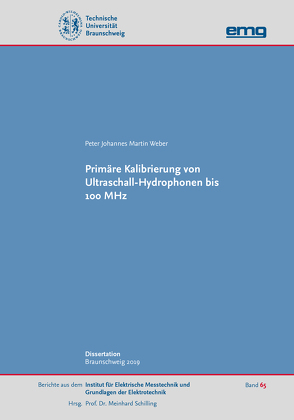Precise and comparable measurements became increasingly important in the linked world we live in. Therefore, in the year 1790 work was started on an international system of units to ensure the comparability of measurements, which finally resulted in the SI-system. All measurements are referred to the definition of the meter, the second, the ampere, the kelvin, the mol and the candela. This is also valid for derived quantities like the Pascal for the ultrasonic sound pressure in water. The presented work reports the development of a setup for the primary calibration of hydrophones for the detection of ultrasound. Hydrophones are devices, that transfer the sound pressure into an electrical voltage. The ratio between the voltage and the sound pressure is called hydrophone sensitivity and this ratio is determined during calibration. The first step of the calibration characterizes a sound pressure field in water by measuring the displacement of the water surface. A laser vibrometer is used for this task. The direct traceability to the meter is realized by the well-known wavelength of the laser. This measurement enables the precise characterization of the field of an ultrasonic transducer. In the second step, the hydrophone is exposed to the known acoustical field and the hydrophone voltage is determined. The hydrophone sensitivity is determined from the results of both steps afterwards. For this calculation corrections and the uncertainty budget are determined, which are both subjects of this work. To generate the ultrasonic field, an impulse procedure was used. It was used for the primary calibration for the first time. This procedure has the advantage, that the frequency range from 1MHz to 100MHz can be covered by one measurement and the hydrophone sensitivity can be evaluated in amplitude and phase. This fully characterizes the hydrophone sensitivity. It is a significant improvement compared to the former procedure of monofrequent burst excitation, which was used only up to 60MHz and allows only the determination of the amplitude. The calibration results can now be used, as it is shown as an example in this work, for the signal deconvolution of measurements, performed with the hydrophone, to reconstruct the original sound pressure. By this method, broadband signals acquired with hydrophones with a non-flat frequency response can be evaluated. ..weiterlesen
Primäre Kalibrierung von Ultraschall-Hydrophonen bis 100 MHz
Precise and comparable measurements became increasingly important in the linked world we live in. Therefore, in the year 1790 work was started on an interna..weiterlesen
